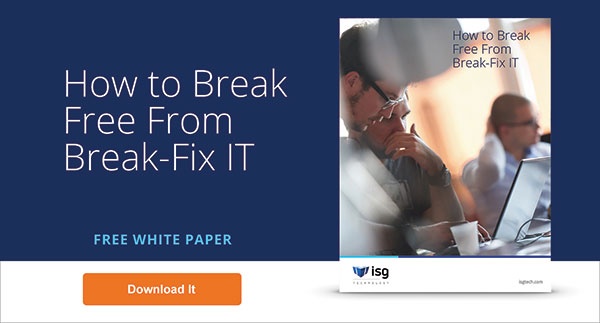How Office 365's newest features will improve business operations
Office 365 has been a staple business tool for six years. The program has evolved considerably in that time to better serve modern users and address company pain points as employee and consumer demands shift. Added functionalities have consistently improved Office 365 to the universal status it holds among organizations, and it will continue to advance in the future. Let's take a closer look at how Office 365's newest features will improve business operations.
1. Better service visibility
When your critical functions rely on a vendor's availability, it can be challenging to know when an issue appears and how to respond. Office 365 recently rolled out a commercial release of its service health dashboard. According to Redmond Magazine contributor Kurt Mackie, this function allows subscribers to access a dashboard that will show actionable service incidents and advisories, as well as the current state of their program. This portal provides better visibility into your Office 365 services and workaround information for any emerging issues. Future updates will allow users to send messages to each other, receive incident notifications and get health checks from IT professionals.
The service health dashboard will considerably improve business operations by quickly providing updates and necessary details for how to address an issue. This information will minimize downtime and help organizations quickly recover from problems.
 Office 365 now offers visibility into service health.
Office 365 now offers visibility into service health.2. Improved collaboration
Staff members must have a tool that enables them to communicate and collaborate effectively, no matter where they are working from. Microsoft introduced this functionality through Microsoft Teams in Office 365. The chat-based tool enables team collaboration for subscribers in 181 markets serving 19 languages, IT-Online stated. Microsoft Teams is becoming a project hub to find notes, tasks and documents in line with team conversations. The tool also has support for high contrast, screen readers and keyboard-only navigation. This type of accessibility provides new opportunities for businesses and will continue to add functionality in the future.
"Microsoft's Office 365 Secure Score API evaluates the risk of cloud services."
3. Advanced security
In the age of evolving cyber threats, organizations must have the right security to protect their sensitive company and consumer data. With the number of tools within Office 365, it can be difficult to manage all of these assets and provide the necessary authorizations. Office 365 Groups establishes a single team identity and set of permissions across Office 365 services, CMSWire contributor Dean Swann stated. This will help easily provision and take away capabilities to ensure information security. No matter what features that you decide to use, it will be much simpler to add users and grant access while maintaining protections.
Organizations have long been concerned about the safety measures within the cloud and whether it's secure enough to store sensitive information. For industries with compliance regulations, it's even more imperative to have a tool that adheres to these regulations. Microsoft's Office 365 Secure Score API evaluates the risk of cloud services, and if your particular data would be secure. According to Redmond Magazine's Chris Paoli, Secure Score monitors 77 different factors including user behaviors and security settings. The score from these points can be used to mitigate risk and identify trouble areas. Secure Score will also provide suggestions on how to improve your protections and ensure your cloud environment is safe.
Office 365's newest features have a lot to offer business operations. These additions will significantly improve security, collaboration and overall visibility. Staff can make informed decisions faster and ensure their systems are responding appropriately. To find about how to take advantage of Office 365's newest tools, contact ISG Technology today.

 Businesses must take stock of essential hardware and software.
Businesses must take stock of essential hardware and software. Network monitoring can help ensure proactive maintenance
Network monitoring can help ensure proactive maintenance Organizations should routinely test their DR solution.
Organizations should routinely test their DR solution. Your own employee could be the biggest threat to business security.
Your own employee could be the biggest threat to business security. Backups are the first part of a disaster recovery strategy.
Backups are the first part of a disaster recovery strategy. Migrating to a managed service provider environment comes with a wealth of benefits.
Migrating to a managed service provider environment comes with a wealth of benefits.

 Managed service providers can offer access to advanced tools that might otherwise have been too expensive for businesses to implement internally.
Managed service providers can offer access to advanced tools that might otherwise have been too expensive for businesses to implement internally. Network monitoring solutions can help support security and performance.
Network monitoring solutions can help support security and performance.